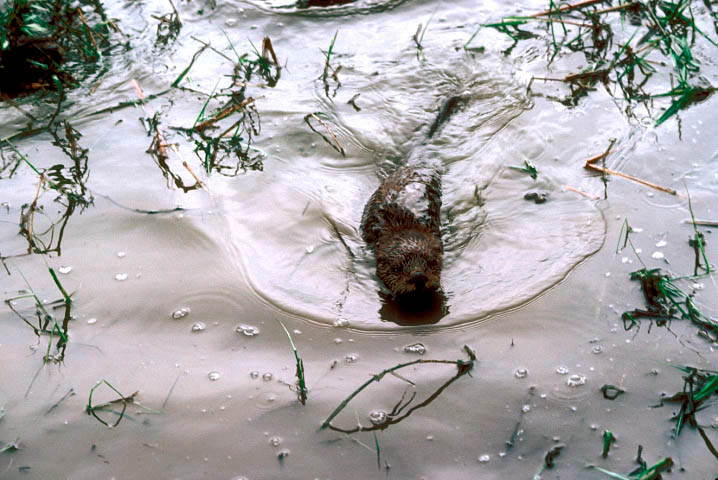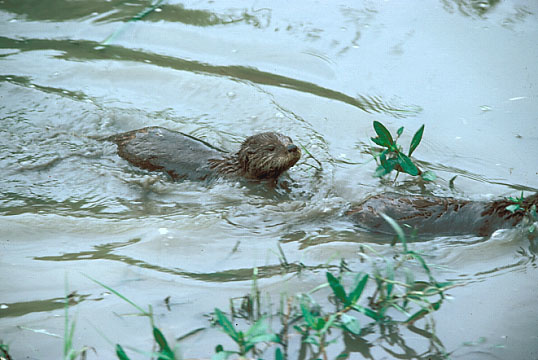Outdoor Story: Otter Hissy Fit
Friday, November 10th, 2017This is passport to Texas Outdoor Stories
Leslie McGaha wanted to try out her new bass kayak on Sam Rayburn Lake. Shortly after she got on the water, she had company–an otter!
So it was about 9:30 in the morning and I paddled across a branch of the lake, and I was hot. And so I saw a shady spot and figured I would go ahead and park there and see what I could see. And it was amazing: I saw a giant black crawdad crawling out of the bank; I was listening to the fish noises and the birds; the gar. Then, all of a sudden there was this bright flash of silver off to my right and I thought it was a gar or a carp. I keep watching, and then I see this head pop up out of the lily pads and look straight at me. And it wasn’t very happy that I was there, and he let me know. He made this sound like [makes hissing sound] And I didn’t know what it was. And he went back down after he told me his displeasure and then he comes back up and he makes this noise at me again [makes noise]. So, I decided I wanted to play the game, too, and I hissed right back at him [hisses]. And then he stopped for a second and looks straight at me and he and he starts hissing, kind of like he’s yelling at me. So I hissed back. So we have a pretty good conversation for a few minutes, and he pops down again, pops back up, and we start the whole thing over again two or three times before he goes on his merry way a little bit farther up the creek channel. It was just the funniest thing that had ever happened to me; it was amazing.
Share your Texas outdoor story with us; just go passportotexas.org, and click on Outdoor Stories.
That’s our show—funded in part by Ram Trucks. Guts. Glory. Ram.
For Texas Parks and Wildlife…I’m Cecilia Nasti.





 Passport to Texas is a
Passport to Texas is a  Passport to Texas is made available by:
Passport to Texas is made available by: